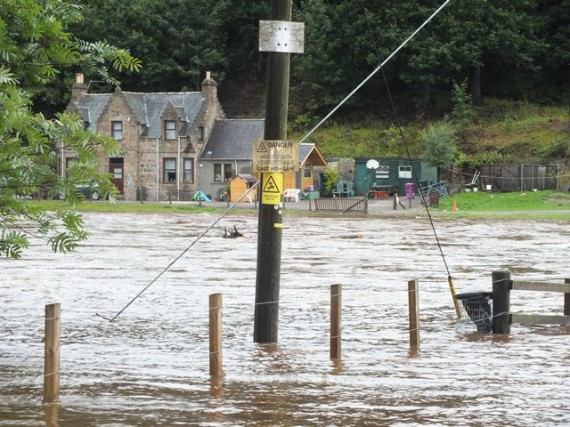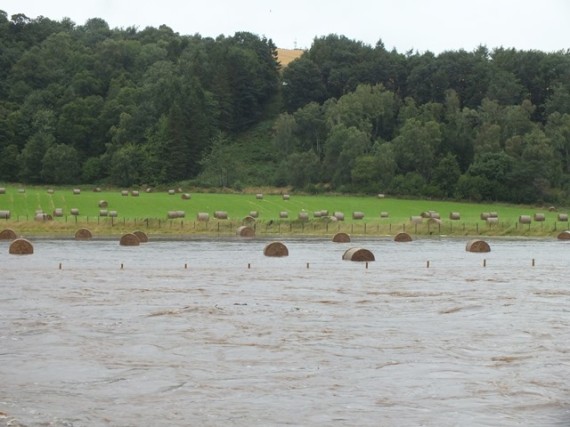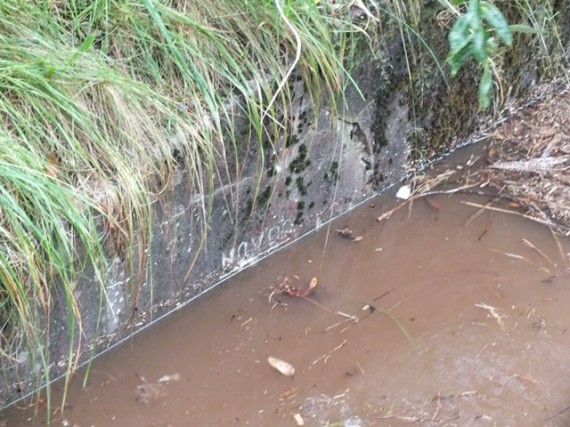We were promised a wet and windy night from the tail of Hurricane Bertha and she certainly delivered. Looking at the river level websites it appears as if the whole of the Spey catchment was affected by heavy overnight rain and strong winds. The local burns at Knockando were very high this morning with the Spey mainstem still rising until about 12 noon. In the Aberlour area the river was up on the floodplain with some of the locals saying it was as high as they had seen. The river was transporting a huge volume of debris downstream, mainly tree trunks and branches, along with all the other accumulated debris from a couple years of relatively low water.

The Spey at Aberlour, the river level here peaked at noon.
The weeks of nice summer weather experienced in July must seem a distance memory for some already. The farmers took advantage and made hay but these bales will probably not be much good now.

All that hard work for this
On the walls of one of the old railway line underpasses in Aberlour there are marks showing the levels of previous flood events. The Nov 2000 flood level was exceeded this morning although it would have to rise another 18″ to reach the July 1970 level.

Historic flood levels on an Aerlour underpass
This is my third year here and this is by far the biggest flood event in that time. The fishing will be out of action for a couple days for sure but of greater concern is whether these big flood events have any significant impact on juvenile fish stocks in the river. We have recently surveyed the mainstem using the timed electrofishing protocol so if we get the chance, and assuming that river levels drop back sufficiently, it would be good to repeat some of these sites to re-assess salmon fry numbers. I spoke to one of the ghillies at the lower end of the river this morning and whilst the river was still rising down there it wasn’t yet at the level of the 2009/10 floods. Looking at the history of flood events it is remarkable how often August features in flooding records; it is a month that can deliver intense rainfall.
However, it is never all negative with these things and the Ranunculus will hopefully have taken a hammering; as will other invasives such as himalayan balsam which have been spreading over some of the river gravel bars. We can only hope that not too much damage has been done to our juvenile fish stocks and other wildlife along the river.
Spey Fishery Board
